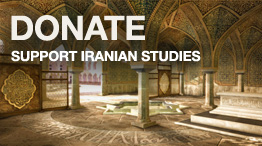The economic, political, and social situation of the Middle East is rapidly changing. Perpetuated conditions of war and ongoing political and military contestation among neighboring countries have become a legitimizing discursive tool by the states to intensify surveillance and repression against the perceived enemy and internal disorder. More recently, the COVID outbreak and mismanagement of vaccine provision and distribution, environmental degradation, and water shortage issues have further exacerbated the situation and left civilians with a myriad of humanitarian and socio-political crises.
Women and sexual minorities are among those whose experiences of accelerated daily violence are impacted by geopolitical events and discourses in various ways. From the imposition of compulsory wearing of hijab since the 1979 Islamic revolution in Iran and sexual assault against Yazidi women by ISIS members, women’s bodies have become instrumentalized for advancing geopolitical projects and their embedded ideologies. While the protection of women has become part of the “rescuing mission” narrative by the West in mainstream media and politics, Iranian feminist and queer activists are struggling to claim their agency against patriarchial inequalities within both the Islamic regime’s fundamentalism and dominated victimizing discourses. Moreover, in the past few decades, with the increasing legal recognition of LGBTQ rights across the world, gay rights have been added to women’s rights as another marker to divide societies into the binary of progressive versus backward (Puar 2018).
While a growing body of literature has emerged in dealing with gender and sexuality-based discrimination in Iran, less attention has been paid to its geopolitical context in the Middle East. This paper examines how Iran’s nationalist discourses, largely informed by its foreign and regional policies and antagonist relations with the US, have shaped policy and discourse on women and sexual minorities’ rights. Drawing on content analysis of government’s policy documents and comparative discourse analysis of Iranian and American news media, I argue that understanding how imperialist and fundamentalist discourses are constitutive of, rather than contrasting each other, can help us make better sense of gender and sexuality politics in Iran and possibilities for progressive and more enduring strategies that effectively pushes against repression and injustice embedded within both of these ideological and coercive frameworks.
Reference:
Puar, J.K., 2018. Terrorist assemblages: Homonationalism in queer times. Duke University Press. (204)
